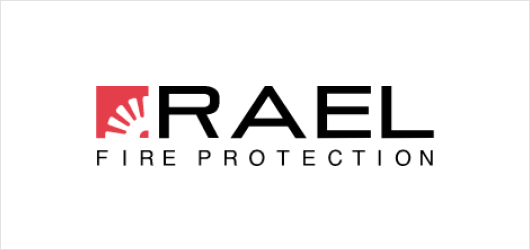A fire suppression system is one of the most effective forms of protection from the crippling effects of fire. However, different business environments require different protection systems. And RAEL recognizes that need by offering a variety of systems and services to suit all kinds of enterprises.
6 Types of Fire Suppressions Systems
1. Wet Pipe System
It offers the simplest yet most reliable form of protection against fire. In this type of system, water is constantly maintained within the piping and will discharge immediately upon activation. This is commonly used in commercial buildings that only require basic fire protection.
Advantages:
- Least number of components to maintain
- Easily modified because modifications only involve shutting off the water supply and draining pipes
- Has the shortest down time after a fire
Disadvantage:
- Not suitable for sub-freezing environments
2. Dry Pipe System
A dry pipe system does not have water continually maintained and stored. Instead, the pipes use compressed air or nitrogen, and the water is held back by a valve. Once the system detects enough heat, it releases the pressurized air and allows the water to enter the pipes.
Advantages:
- Suitable for commercial or industrial structures where the pipes are not protected from freezing temperatures. Examples are commercial freezers, loading docks, or parking garages.
- Does not leave water sitting in the pipes, which could cause rusting
Disadvantage:
- Reduced design flexibility since each individual dry pipe system has a maximum permitted size
3. Pre-action System
A pre-action sprinkler system is quite similar to a dry system, except it requires a two-step activation. When sufficient heat or smoke is detected by the system, the pre-action valves will open and allow the water into the pipes and sprinkler heads. The sprinkler heads will then be individually activated to release the water over the fire. The second step prevents inadvertent discharges.
Advantages:
- Ideal for water-sensitive environments like libraries, museums, laboratories, and data centers.
- No accidental release of water in case of false alarms
- Can also be used in cold temperature locations
Disadvantage:
- Can be difficult to modify due to size limitations
4. Foam Deluge System
This type of system is installed in high-hazard areas. It’s also similar to a dry pipe system, except that the sprinkler heads in the deluge system are always open. Once heat is detected, the pipes immediately fill with foam, and this is released across all open sprinkler heads, causing a deluge in the entire affected area.
Advantages:
- Suitable for industries that deal with flammable liquid
- Can suppress challenging fires quickly
Disadvantage:
- Can be difficult to clean up
5. Early Suppression Fast Response System (ESFR)
An ESFR is more focused on the origin of the fire and stopping it rather than just controlling the spread. In this system, the sprinkler heads release larger droplets of water and at a greater velocity and volume than other types of fire suppression systems.
Advantages:
- Suitable for warehouses with high-piled inventory
- Designed to fight fires as quickly as possible
- Cheaper than an in-rack system
Disadvantages:
- When not constructed or designed properly (sprinklers are obstructed), this system will fail to suppress a fire
6. In-Rack System
An in-rack system is a more complex type of a fire suppression system. In addition to fire sprinkler systems on the ceilings, there are also detectors placed near racks of stored equipment or materials to contain the fire to the affected rack.
Advantages:
- The sprinkler will discharge only on the affected rack instead of the entire room
- Extremely modular and can be modified easily
Disadvantage:
- Can be more expensive than other fire protection systems
Cost of a Fire Suppression System
The cost of a fire protection system greatly varies on a number of factors, such as the type of system, layout and design, features, and materials. But generally you can expect to pay the least for a new construction project than for retrofitting an existing business. Retrofitting a historical building will cost the most.
RAEL Fire Protection Installs All Types of Sprinklers.
Not quite sure which system works best for your organization? We can help. We service all sprinkler and standpipe systems nationwide. You can call upon our 100+ years of expertise in the industry by sending us a message or contacting us at 855-723-5911 (NY Metro Area) and 844-438-7235 (for National Service).


Recent Comments